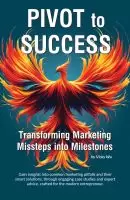- +1 512-591-8295
- [email protected]
- Mon - Fri: 9:00 - 16:00
- +1 512-591-8295
- [email protected]
- Mon - Fri: 9:00 - 16:00

I’m answering an entrepreneur #marketingquestion today
This entrepreneur has been in the travel business for a few years and has been pretty successful using free marketing options on social media until Covid hit and her business dropped to near zero. I think a lot of entrepreneurs can relate to the impact that the pandemic had on numerous businesses.
She knows it’s time to invest money in her business. She has bought subscriptions to Adobe Cloud and Canva Pro. She doesn’t have much more money to invest and wants to know where she should put it and overall how much she should budget to spend on her marketing.
Let’s walk through my recommendation to her and hopefully it will generate some ideas that will help you as well.
First thing, always keep in mind that investing in your business is important. It does take money to make money. It’s true that in the beginning you can get by bootstrapping your business and finding inexpensive ways to get by. I also know that when the economy starts to tighten – which all of the experts say that it will continue doing for at least the short term, people hold onto their money more regularly and focus on buying necessities – buying less luxuries such as travel. The pandemic hit travel businesses especially hard since so many countries closed their borders at least partially.
This is her very first marketing expense, and to an extent the first larger expense in her business that she is considering.
When you’re bootstrapping your business, you need to be highly focused on marketing activities that can offer the best ROI. You can’t afford to just sink money into things for the sake of buying them. Your first marketing expenses need to focus on those things that are going to bring money to the bottom line … get you sales, closed transactions.
Customers aren’t buying her travel services because she has added professional graphic design programs such as Adobe Cloud and Canva Pro. While it’s true that we all want to see eyecatching images of travel destinations … she is using photographs from professional photographers, or stock photos of the destinations, so the manipulation she is doing in Adobe or Canva isn’t likely increasing the ability to convert viewers into customers in any way.
Someone isn’t going to book based upon the fact that she has put text on a stock photo, or her text layout looks slightly better than someone else’s. In the case of wow-factor images of exotic destinations, it’s actually much better to let the image stand on its own, and add the text only in the post/captions. She may actually be harming the impact of the images.
Canva and Adobe do let you fairly easily redesign your post into the different formats and sizes quickly, but even that isn’t helping her actually book more clients, just perhaps making her time slightly more efficient (which is not bad at all). So the expense she is paying for multiple graphic design programs likely is not the best use of her marketing budget (unless you’re in the graphic design business, it’s likely the same for you as well). She can likely get by with nothing more than a free Canva account and access to great destination photos (which are usually supplied, royalty free, by the destinations for travel agents to use).
Between those two subscriptions, she is probably spending $50 per month, so by cutting those expenses she will immediately have that much money to switch to a different marketing strategy that has the ability to provide a trackable return on her investment. She’s also willing to add roughly that same amount to her new marketing budget, which gives her $100 to spend per month. Compared to zero before, she’s looking at some great options.
A great spot to shift that budget would be into lead generation activities that get people interested in travel into her funnel.
And I’m not speaking about spending that money on a funnel platform. Everyone who does sales has a funnel even if they have not purchased software that is called a “funnel” meant to automate the process. Those are helpful, but they are not alone a funnel and if you’re starting out, there are other ways you can still get it done without spending your very limited budget on purchasing software.
Choosing where to put limited marketing dollars depends entirely upon your business goals, and if you aren’t considering those goals before making the decision, it can be very easy to be tempted by the latest shiny object (platform). She had fallen into that trap once already, and we didn’t want it to happen again.
So I start by asking WHY five times. Why “why” and why 5 times?
As you likely know by now, my penchant for the number five comes from the fact that my last name – Wu – also means five in Taiwanese. BUT … that’s not why I’m doing it here.
Sakichi Toyoda, the Japanese industrialist, inventor, and founder of Toyota Industries, developed the 5 Whys technique in the 1930s. It became popular in the 1970s, and Toyota still uses it to solve problems today.
The first thing I asked her is
1.WHY are you wanting to do marketing.
So more people will see the travel deals that she can provide.
2. Why do you want more people to see the travel deals?
So I can get more clients.
3. Why do you want to get more clients?
So I can make more sales.
4. Why do you want to make more sales?
So I can make more money
5. Why do you want to make more money?
So that I can support my family.
Turning that full circle, we discussed how she had chosen to purchase subscription to Adobe Cloud and Canva Pro because her initial goal was to get more people to see her travel deals. When you stop at the shortest answer to the question, purchasing a graphic design subscription may make the most sense. You’re wanting people to see something, and graphic design is a way that they see it.
Yet when we dig deeper, we give more direction to her choices. We talked through how the choices of what marketing she strategies would be different based upon each answer. When you boiled it down to the fact that her real goal was making money to support her family, the selection of subscriptions to graphic design software didn’t make as much sense.
Now that her choice of where to spend her marketing budget was refocused, we were ready to talk some real alternatives that could actually help her make money sooner and more efficiently than what she had initially chosen to do.
One of the marketing strategies I recommended was some pay-per-click advertising that is highly focused using targeted campaigns. When done right, these ads can result in a real return on investment that can either result in someone immediately purchasing travel services, or help get people on her email marketing list that aren’t quite interested in buying today but will be in the near future and are starting their planning.
(I always recommend you find ways to get people off of social media and into your own platforms and funnels.)
Those longer-term buyers actually also help your business long term by continuing to generate sales.
Another option I recommended was email marketing. It still tends to have a better response because of the way social media has been draining awareness (and our attention span and perhaps our brains).
A third option would be text message marketing campaigns. Getting directly in front of prospects where they are consistently generates the best results, and in today’s world they almost always have their phone in their hand or close by, and text marketing can generate good results.
Even better, she can map out a flow that takes prospects through a journey that may encompass all of these possibilities (ie a funnel).
Those social media graphics that she has been designing can also still play a part in this more cohesive marketing strategy. However, as previously noted, she does not need to purchase a professional graphic design subscription to continue this piece.
As part of our marketing strategy calls, we discuss more than one opportunity because sometimes, especially when you are just starting out and you’re doing 100% of the work, you need to find those marketing tactics that resonate most with you and choose to start with those, while also having a plan for other strategies that you can seamlessly add on to your plan in the future.
I asked her where her genius in her own business lies. Her answer was in helping find unique and budget-friendly creative adventures for the family … not in posting on social media.
This is true for most entrepreneurs. Your zone of genius is not social media marketing – and should not be unless your job is a social media marketing manager.
To get the best results, you need to keep your focus on your zone of genius and either make other tasks super efficient, or outsource. She wasn’t quite ready to outsource (although I spoke to her about our affordable and effective monthly social media marketing plans that she could consider when she’s ready.)
We discussed social media automation being something she should consider.
She can either purchase a subscription to one of the platforms that allows her to pre-schedule posts and get them lined up in a queue, which will let her prepare her social media posts all in one sitting once a month versus trying to come up with new ideas daily. If she didn’t want to put some of her marketing dollars on purchasing a subscription, she could use the various social media platforms’ built-in schedulers to accomplish the same time savings. Facebook Creator Studio will let you schedule for both Facebook and Instagram; Tweetdeck will let you schedule for Twitter.
There is still daily work that should be done with your social media accounts: instead of posting, you switch your focus to engaging and responding, which can be done in less than 15 minutes a day with the level that her followers were currently at. Much more effective use of her time.
This will let her switch her time and attention back to her zone of genius.
It’s no surprise that I am 100% a fan of good branding. I also regularly remind you that branding goes far beyond the images used in your marketing.
While it’s been proven that bad design can turn people away (if it’s bad to the point of being distracting), but there is less growth to your bottom line when you compare good to great images. There are a few industries where that gap is wider – such as photographers – otherwise the impact on the bottom line between good images and great images isn’t as noticeable. Design doesn’t generate sales, unless you sell design.
The second half of her question was how much she should spend on marketing.
While it varies mostly based upon the lifecycle stage of your business, most experts agree that a good rule of thumb is 20% of your annual budget should be for marketing activities.
Most startups or those in high-growth mode tend to put a larger percentage of their budget towards marketing than those businesses that are more established. It may look more like 25-30% rather than double or triple the numbers.
You can bootstrap this pretty easily when you’re a solo entrepreneur in startup mode.
With each sale, set aside 20% of the income for marketing.
This is much easier to track if you sell high-ticket items – one sale of $10,000 then you set aside $2,000 for future marketing, whereas if you’re selling $1 widgets it’s harder to track 20 cents each and every time, so in those cases you can make that calculation at the end of the month.
Then consider how long it usually takes you to close a sale, and budget the amount you’ve earmarked for marketing over that length of time. If you close one $10,000 sale every three months, then you know that you need to budget the $2,000 you earmark for marketing over the next three months. If you sell ten thousand $1 widgets every month, then at the end of the month you know you can schedule marketing for next month based upon our $2,000.
The one caveat for bootstrapping this way is if you are still at a state of widely varying income levels each month, you want to be careful signing contracts for long-term commitments if it would mean there are months you can’t sustain that level. You need to be nimble and flexible when you’re starting out. It can also be harder to plan out an entire year ahead when you are bootstrapping your marketing budget this way, so you do want to make sure that you still develop a plan so that you can remain focused.
One of the other issues we warned this entrepreneur about was putting all of her eggs in one basket, especially when that basket is not owned by you.
She was considering her social media as owned media, but in reality it’s not. She has focused all of her marketing to this point on her Facebook and Instagram accounts. We all know that social media can be a great way to do free marketing, yet I also know that the organic reach of social media has been dismal. The bad reach means that you almost always have to pay to play.
We also warned her about what can happen when you’re focusing 100% of your marketing or business on a platform that you do not own, such as the platform banning you or shutting down your account, and all of that work that you’ve done to establish your presence is lost forever.
When the economy is booming, it’s easy for your business to make money.
When a potential recession is looming or the economy starts to slow, it’s even more important to focus your marketing efforts. You have to work smarter and not harder.
The strategies that you used before may not work as well when the economy slows. You need to revisit each of those strategies and understand if they’re still right for your business and your audience. Consider where your business is at in the growth cycle. Consumer buying habits are changing, and in this case you need to focus and be more strategic.
The worst thing you can do is decrease your marketing. This is a mistake that a lot of businesses tend to make when the economy (or their industry) slows down a bit, but because so many are slowing their marketing, you have the opportunity to outpace what they’re doing … but you have to be strategic and focused.
You should never choose a marketing strategy simply because someone else did it and it looked like it worked for them.
There are thousands of marketers out there who are selling “systems” and “funnels” like an MLM and the only person making money using the strategy is the person at the very top. Don’t get confused or sucked in by cookie cutter marketing strategies. Your business isn’t cookie cutter and your marketing shouldn’t be either.
That’s why we offer our Rent-a-CMO program. The flexible offerings allow you to purchase a 1-hour private strategy session, or choose packages where we consistently meet with you to help you hone and finetune your marketing strategy to be most efficient and get the best results.
Get solid marketing strategies, designed for entrepreneurs on the track to 7-figures and beyond, right in your inbox.

This website uses cookies to ensure you get the best experience on our website. By continuing to use the website, you agree to our use of cookies. We do not share or sell your information. More info
